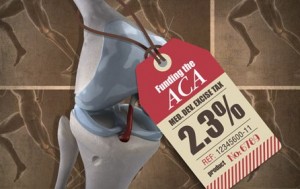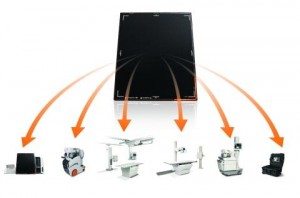Category: “Top Links”
- Who are the most influential people in healthcare? One makes over $30 million
- The Radiologist’s demise?
- VERY bad news for surgical sales reps: devicemaker sales reps being replaced in the OR
The rep-less model is being driven by pressures on hospitals to lower costs—declining reimbursement rates, lower patient volumes, financial risk arrangements with insurers, and employers and consumers seeking lower-cost procedures. The hospitals most likely to employ this model are academic medical centers, which have some of the most stringent policies on sales reps' access to clinicians and operating rooms. Some hospital officials say they favor the rep-less model because they are tired of paying “selling, general and administrative,” or SG&A, costs as part of the price of an implantable device. Those costs can make up nearly 40% of the price. Another reason is that they believe sales reps have become too heavily involved in clinical procedures.
- 50 things to know about 5 leading payers
Here are 50 things to know about Aetna, Cigna, Humana, UnitedHealth Group and WellPoint — five leading health insurers in the U.S
- 50 Things You Need to Know About the Hospital Industry
- Key facts about the 6 largest GPOs
- Kaiser, Dignity, Sutter oppose California bill to define “community benefit”
When you think our business can't get any crazier it does. Siemens IT sells out. The most expensive rooms in Radiology get KLAS rating (cause I suppose money doesn't matter). Now California wants to make it harder even harder for hospitals struggling under ACA revenue constriction. CA wants not-for-profit hospitals to give more money away. Perhaps it's like the Federal government - we're in debt and borrowing 50 cents of every dollar so lets give more away. CA - good luck with that.
- Medical Device Excise Tax Collection Reached $1.4 Billion In 2013
- 2014 Estimates of Medical Device Spending in the United States
- Siemens Multix Select DR – tethored DR with a non-elevating table in the 21st Century?
- A quick read to understand the ACA law
- 5 great mistakes in healthcare and how to fix them
A very thoughtful overview of why the Healthcare system isn't working and ACA wasn't the reform needed.
- Health Care Price Growth Moderates
Health sector economic indicators that we need to be aware of. For example: drug prices are up while hospital charges are down. Good news if you're in the pharm business; not good news if you sell high dollar capital equipment to hospitals. Since the recession in 2007 Healthcare costs are up 14.5% while the economy as a whole deflated 10.5%. That means healthcare spending will be forced to constrict. This and many other useful facts are in this whitepaper.
- Medical Spending is on the Upswing
- Reform Update: Some question the value of value-based purchasing
Next year, U.S. healthcare providers will be subject to Medicare penalties if they do not meet up to 26 measures for value-based purchasing. As physicians wait to see if their payments will be docked or boosted based on how they rank, health policy researchers are continuing to raise questions about how the program works.
- Interesting nuances on how Radiologists read – and how to compare quality
- Judgements about trustworthiness are made in the first second of meeting
- 10 key policy issues facing healthcare
1. Is the impact of the PPACA worth the cost?
2. Should federal or state governments control healthcare policy?
3. Are high-deductible plans and high out-of-pocket costs a necessary evil?
4. What policies are generally supported by both parties?
5. Who should be required, if anyone, to cover contraception?
6. Was the administration unable to predict that insurers would be forced to drop catastrophic-only health plans, leading to public outcry?
7. Should individuals using the federal exchange receive subsidies?
8. Is the explosive increase and expansion in the False Claims Act warranted or overreaching?
9. Has lack of antitrust enforcement led to too much hospital power?
10. Should hospitals get paid more than physicians and surgery centers for providing the same services? - Forbes on Repealing The Medical-Device Excise Tax: Next Steps
- U.S. x-ray market could top $1B by 2020
The U.S. remains the world's largest market for diagnostic x-ray systems, accounting for 29.4% of global revenues in 2013, according to the report. Despite the growth of the x-ray market in China, the U.S. will continue to hold the leading share, with 28% by 2020.
- 20 recent hospital capital projects
Almost $700 million in hospital spending – are you a good enough salesperson to earn some of that money?
1. Billings Clinic plans $1.4M inpatient pediatric unit
2. Alegent Creighton Health plans $35M medical complex
3. Norton Healthcare opens pediatric, emergency services units
4. Baystate Franklin Medical Center plans $23M construction project
5. University of Pennsylvania Health System plans $1.5B tower
6. Ukiah Valley Medical Center plans $41M expansion
7. Great Falls Clinic begins construction on $23.5M center
8. Cleveland Clinic plans $276M cancer care building
9. Ocean Springs Hospital completes $16.5M renovation
10. Texas Health Harris Methodist Hospital Stephenville builds $14M ED
11. Cole Memorial Hospital begins $8.3M expansion, renovation
12. Children's Hospital at Dartmouth plans $1.8M renovation
13. Midtown Medical Center begins $5.25M renovation
14. Covenant Health Plainview to undergo $40M remodel
15. Lawrence General Hospital to begin $56M surgical construction
16. Spearfish Regional Hospital to complete $6.2M expansion, remodel
17. Memorial Hospital of Carbondale begins $52M upgrade, expansion
18. Cooper University Hospital unveils $30M new patient wing
19. Memorial Health Care Systems to undergo $9M expansion, renovation
20. St. Joseph Hospital breaks ground on new Milford facility - 100 things to know about Medicare reimbursement
- Small Primary Care Physician Practices Have Low Rates Of Preventable Hospital Admissions
This article points out that the consolidation of physician practices has not demonstrated either cost savings or better clinical outcomes despite conventional wisdom. As independent physicians disappear private practice has become an endangered species. Nearly two-thirds of US office-based physicians work in practices of fewer than seven physicians. It is often assumed that larger practices provide better care, although there is little evidence for or against this assumption. What is the relationship between practice size—and other practice characteristics, such as ownership or use of medical home processes—and the quality of care?
- Nonprofit hospitals at a tipping point
Small and stand-alone nonprofit hospitals are facing mounting pressure from weak operating margins and lower patient volumes, with more signals of stress on the way, according a report released Wednesday from Standard & Poor's Rating Services. The rating agency warned the healthcare sector was at "a tipping point where negative forces have started to outweigh many providers' ability to implement sufficient countermeasures."
- Medtech industry on life support
- Population Health – if we’re getting reimbursed based on it shouldn’t we at least know what it is?
- Impact Of Population Health Management Systems On U.S. Healthcare
- Impact of the Medical Device Excise Tax
- Hospital Supply Chain Managers to Device Vendors: Don’t Just Sell Us More
- Carestream’s Digital DRX X-ray Detectors Surpass 9,000 Units





